August 2, 2025 by 100XBuilds Team
Market Positioning: Beat Luxury Building Competitors
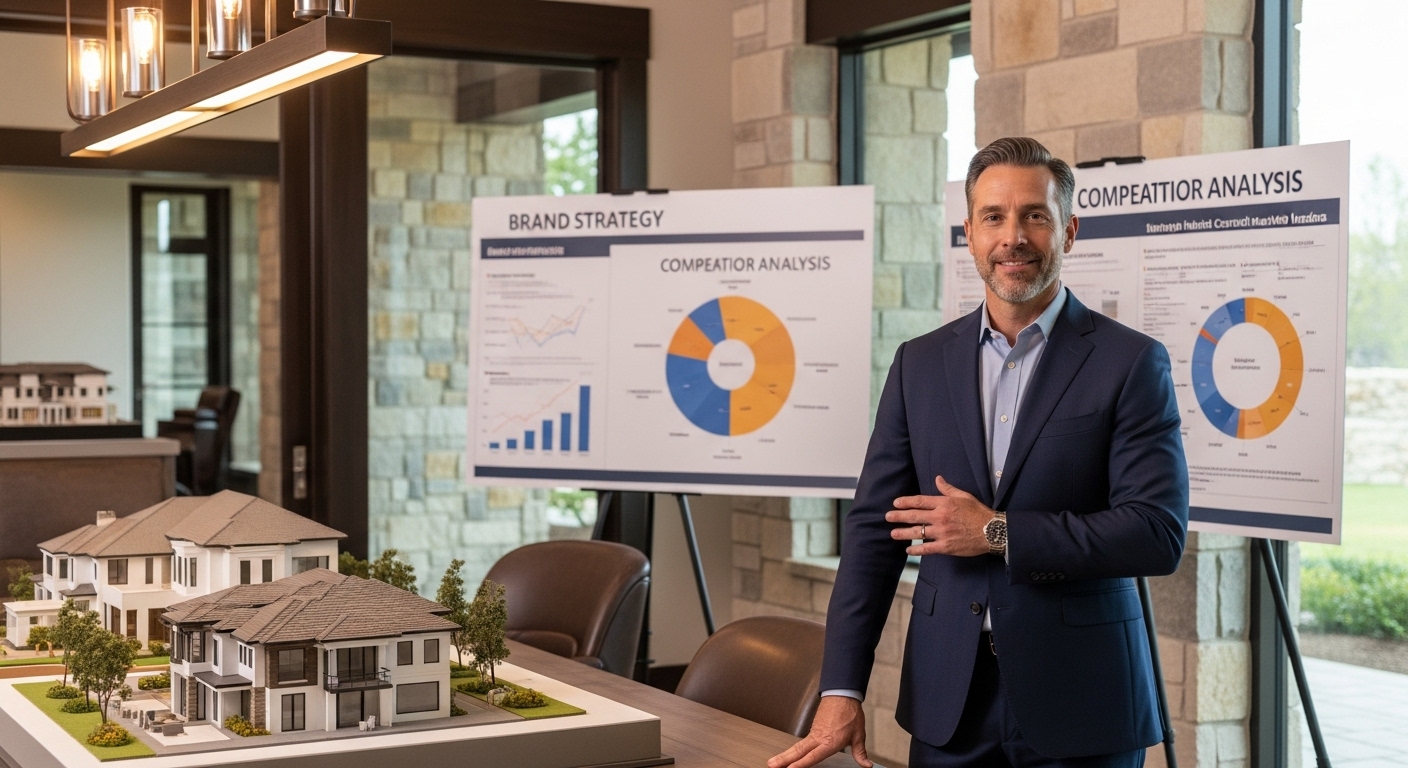
When Toll Brothers reported $9.1 billion in revenue last year, mid-market builders across the country felt the weight of competing against such established giants. Yet within that same period, boutique builder Harrison Custom Homes in Austin increased their average sale price from $2.8M to $4.2M—a 50% jump—by implementing a strategic repositioning that carved out their unique space in the luxury market.
The luxury home building industry isn't just about construction quality anymore. It's about brand perception, market positioning, and the ability to command premium pricing in increasingly competitive markets. For mid-market builders looking to break into or expand within the luxury segment, the challenge isn't just building better homes—it's building a brand that can stand toe-to-toe with established players.
The Luxury Market Reality Check
The luxury home market operates on fundamentally different principles than traditional residential construction. While volume builders compete on price and efficiency, luxury builders compete on exclusivity, craftsmanship, and brand prestige. This shift requires a complete reimagining of how you position your company in the marketplace.
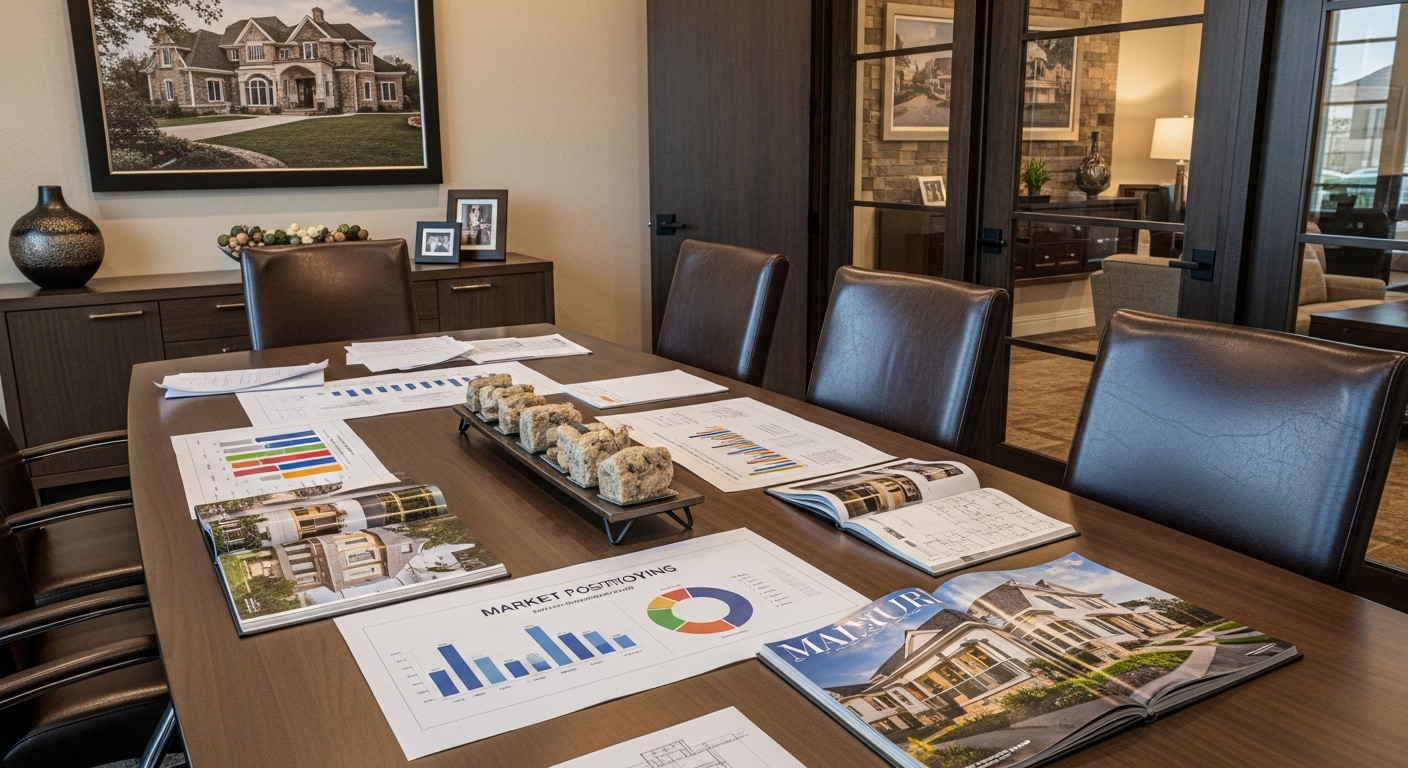
Consider the numbers: luxury home buyers spend an average of 18 months in the decision-making process, compared to 6 months for traditional home buyers. They interact with 12-15 touchpoints before making a decision, and 73% of them research builders extensively online before ever making contact. These buyers aren't just purchasing a home—they're investing in a lifestyle and a brand story.
Market research reveals critical positioning opportunities:
The "heritage gap" - 68% of established luxury builders emphasize their decades of experience, leaving room for innovative approaches
The "personalization void" - Only 34% of luxury builders offer truly customized design processes from initial consultation
The "technology disconnect" - 71% of luxury buyers want smart home integration, but only 41% of builders prominently feature this capability
Strategic Positioning Framework for Market Penetration
Successful positioning against established luxury builders requires a systematic approach that leverages your unique advantages while addressing market gaps. The framework that consistently produces results focuses on three core pillars: differentiation, validation, and amplification.
Differentiation Through Specialization
Rather than attempting to compete across all luxury segments, successful mid-market builders identify and dominate specific niches. This specialization allows for premium pricing while building expertise that established players often overlook.
Architectural specialization strategies:
Modern luxury focus - Target the 34% of luxury buyers seeking contemporary design over traditional styles
Sustainable luxury positioning - Capture the growing eco-conscious luxury segment (41% annual growth)
Technology-integrated homes - Position as the "smart luxury" specialist in your market
Geographic micro-targeting:
Emerging luxury neighborhoods - Establish presence before major players recognize the opportunity
Waterfront specialization - Develop expertise in complex coastal or lakefront construction
Urban luxury infill - Focus on high-end custom homes in established city neighborhoods

Validation Through Strategic Partnerships
Luxury buyers seek validation that their chosen builder can deliver exceptional results. Strategic partnerships provide this validation while extending your capabilities and market reach.
High-impact partnership categories:
Renowned architects - Collaborate with recognized designers to elevate project profiles
Luxury material suppliers - Secure preferred partnerships with premium brands like Sub-Zero, Wolf, or Lutron
Interior design firms - Offer integrated design services through established luxury designers
Partnership leverage strategies:
Co-marketing initiatives that highlight collaborative expertise
Joint showroom experiences showcasing integrated capabilities
Shared case studies demonstrating successful luxury project outcomes
Amplification Through Content Authority
Establishing thought leadership in luxury construction creates market authority that transcends company size. This approach positions your expertise alongside—or above—established competitors.
Content authority development:
Technical expertise showcasing - Detailed case studies of complex construction challenges solved
Design trend leadership - Regular insights on luxury home design evolution
Market intelligence sharing - Local luxury market analysis and predictions
Competitive Intelligence and Market Mapping
Understanding your competitive landscape requires more than surface-level research. Effective positioning demands deep analysis of competitor strengths, weaknesses, and market gaps that create opportunity.
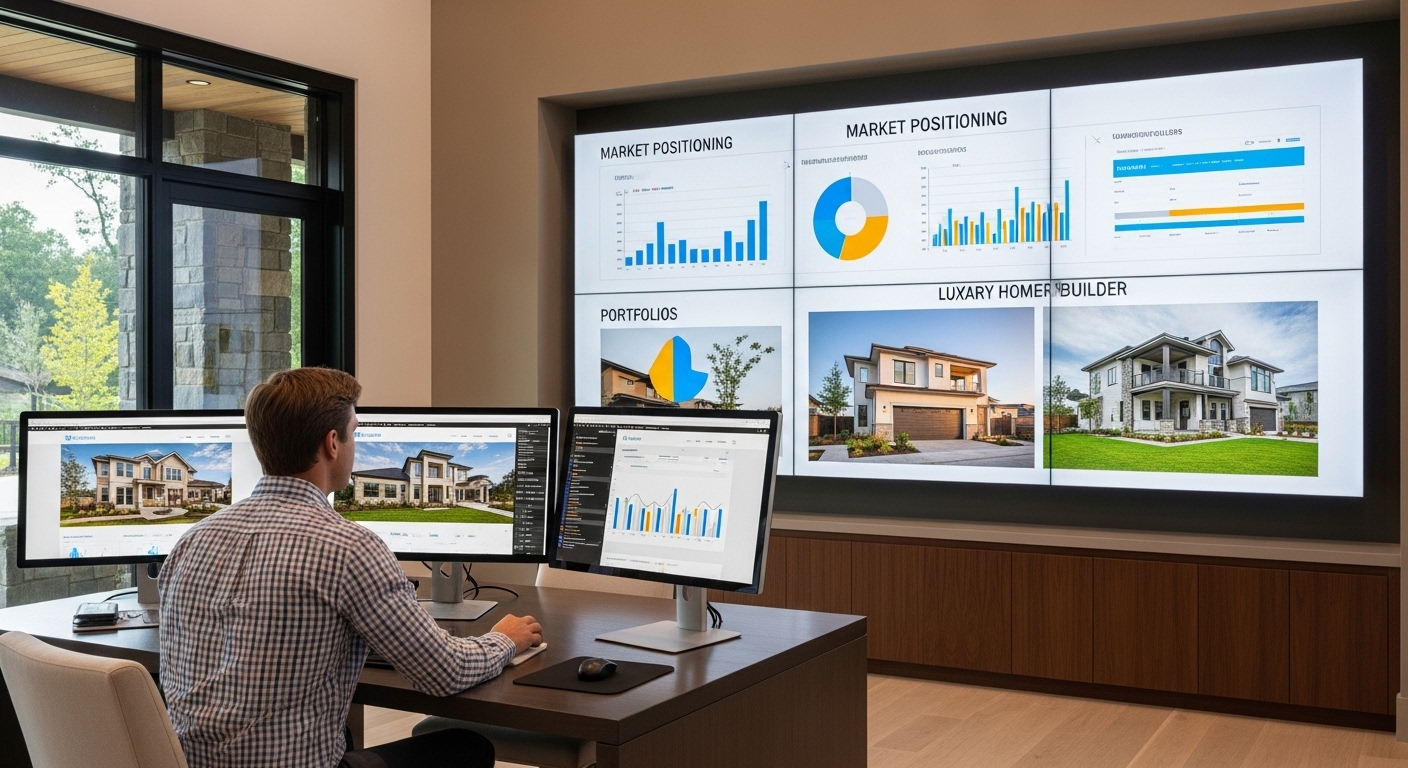
Comprehensive competitor analysis framework:
Pricing strategy assessment: Analyze competitor project ranges, upgrade pricing, and value propositions
Marketing message evaluation: Identify common themes and messaging gaps in competitor communications
Project portfolio analysis: Assess style preferences, size ranges, and geographic focus areas
Digital presence audit: Evaluate website quality, social media engagement, and online review patterns
Client testimonial themes: Understand what clients value most about established competitors
Market Gap Identification
The most successful positioning strategies exploit gaps that established players either ignore or cannot effectively address due to their size and structure.
Common market gaps in luxury building:
Speed to market - Established builders often have longer timelines due to volume commitments
Design flexibility - Larger companies may have standardized processes that limit customization
Personal attention - High-volume builders struggle to provide intimate client experiences
Innovation adoption - Established companies may be slower to adopt new technologies or methods
Local market knowledge - National builders may lack deep local market understanding
Brand Development for Luxury Market Entry
Creating a luxury brand requires more than premium pricing and high-quality construction. It demands a comprehensive brand strategy that resonates with affluent buyers and differentiates from established competition.
Visual Identity and Brand Assets
Your visual identity must immediately communicate luxury and professionalism while differentiating from competitor aesthetics. This extends far beyond logo design to encompass every visual touchpoint.
Essential brand asset development:
Professional photography showcasing craftsmanship details and lifestyle elements
Branded project signage that reflects luxury positioning
Marketing materials using premium paper stocks and finishing techniques
Digital assets optimized for high-resolution displays and mobile devices
Brand consistency across touchpoints:
Website design reflecting luxury market expectations
Social media templates maintaining visual consistency
Proposal and contract documents reinforcing professional image
Vehicle wraps and job site materials supporting brand positioning
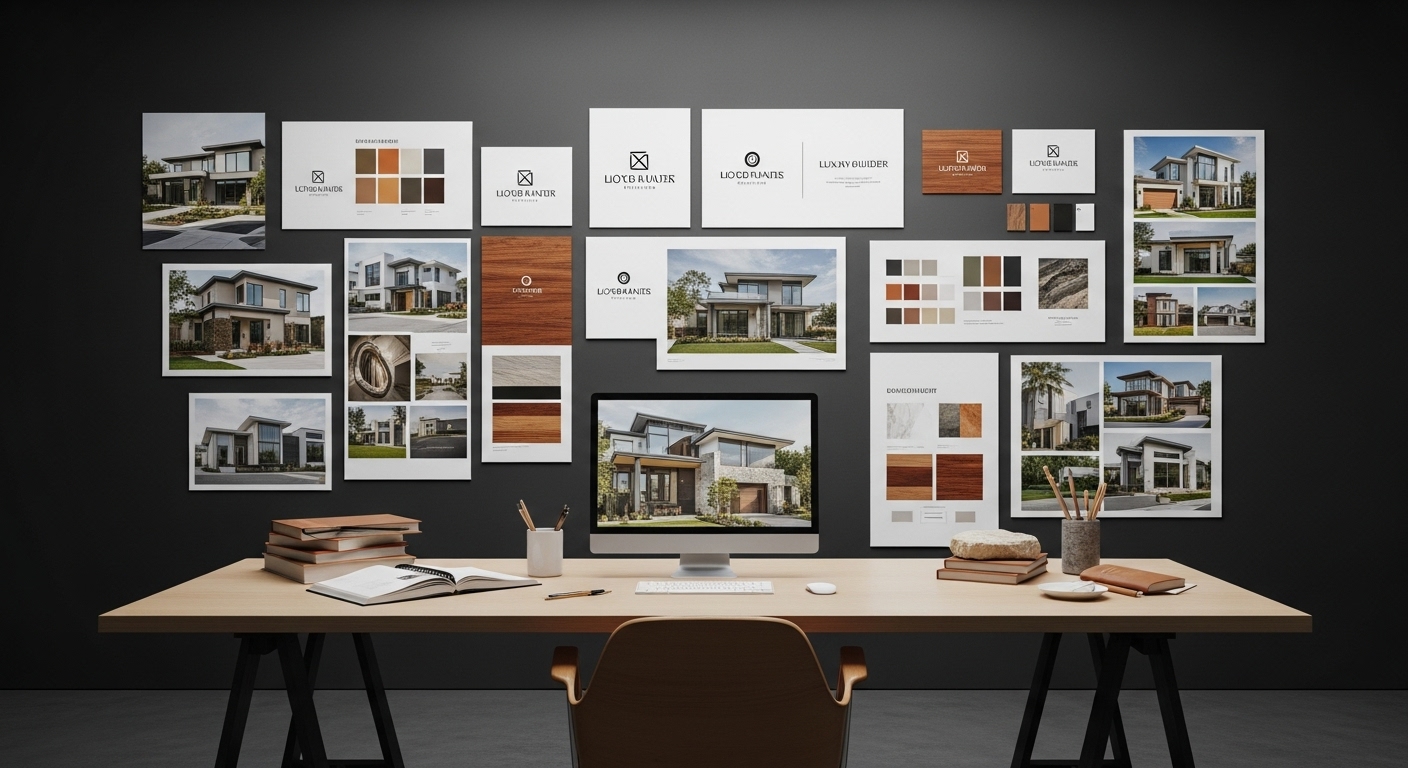
Messaging Strategy Development
Luxury buyers respond to different messaging than traditional home buyers. Your communication strategy must reflect their values, concerns, and decision-making processes.
Effective luxury messaging themes:
Craftsmanship heritage - Emphasize attention to detail and quality construction methods
Exclusive partnerships - Highlight relationships with premium suppliers and designers
Personalized service - Communicate intimate, white-glove client experience
Innovation leadership - Position as forward-thinking in design and technology
Local expertise - Demonstrate deep understanding of local luxury market nuances
Digital Presence Optimization
Your digital presence serves as the primary validation tool for luxury buyers researching builders. Every element must reinforce your positioning and competitive advantages.
Website optimization priorities:
High-quality project galleries showcasing craftsmanship details
Client testimonials emphasizing experience and results
Team credentials highlighting expertise and qualifications
Process transparency demonstrating professionalism and organization
Content marketing strategy:
Regular blog posts establishing thought leadership
Social media content showcasing behind-the-scenes craftsmanship
Email newsletters providing market insights and project updates
Video content featuring client testimonials and project walkthroughs
Pricing Strategy for Premium Positioning
Pricing in the luxury market requires a fundamentally different approach than traditional residential construction. Your pricing strategy must reflect your positioning while remaining competitive within your target market segment.
Value-Based Pricing Implementation
Luxury buyers focus on value rather than cost, creating opportunities for premium pricing when properly positioned. This requires clear communication of unique value propositions and differentiated service offerings.
Value proposition development:
Exclusive design services - Custom architectural and interior design included in base pricing
Premium material standards - Higher-grade materials as standard rather than upgrades
Extended warranty coverage - Comprehensive warranties exceeding industry standards
Concierge services - Additional services like permit handling and utility coordination
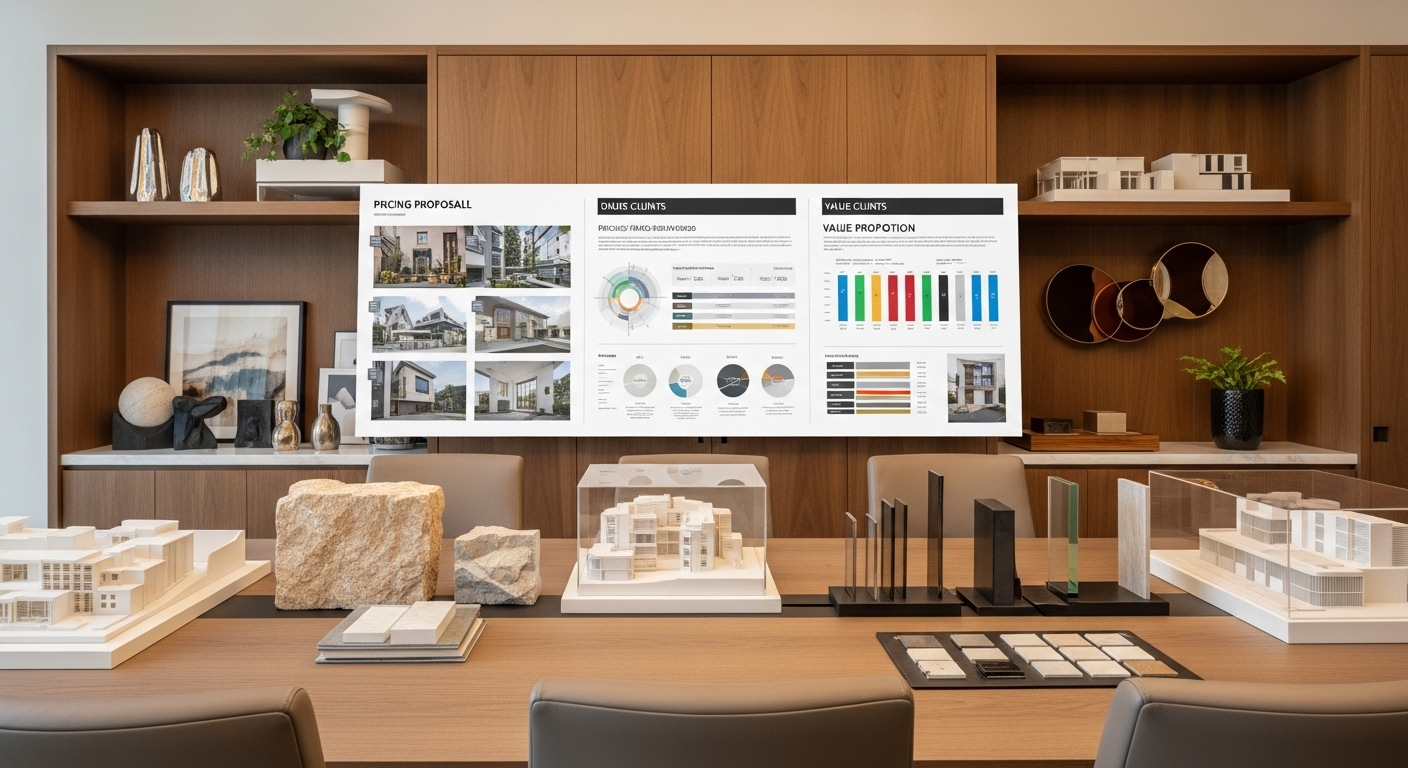
Pricing structure optimization:
Transparent base pricing with clearly defined inclusions
Strategic upgrade packages offering additional value
Flexible payment structures accommodating luxury buyer preferences
Competitive analysis ensuring market-appropriate positioning
Market Testing and Adjustment
Successful luxury positioning requires ongoing market feedback and pricing optimization. This iterative approach ensures your positioning remains competitive while maximizing profitability.
Market testing strategies:
Limited-time positioning tests in specific market segments
Client feedback collection on pricing and value perception
Competitor pricing monitoring and adjustment protocols
Profitability analysis ensuring sustainable business model
Implementation Timeline and Milestones
Repositioning for luxury market competition requires systematic implementation with clear milestones and success metrics. This structured approach ensures consistent progress while allowing for strategy refinement.
Phase 1: Foundation Development (Months 1-3)
Brand strategy finalization - Complete competitive analysis and positioning strategy
Visual identity creation - Develop comprehensive brand guidelines and assets
Website redesign - Launch luxury-focused website with optimized content
Team training - Educate staff on luxury market expectations and brand standards
Phase 2: Market Entry (Months 4-6)
Marketing campaign launch - Implement integrated marketing strategy across all channels
Partnership development - Establish relationships with luxury market partners
Lead generation optimization - Focus marketing efforts on qualified luxury prospects
Process refinement - Adjust client experience based on initial market feedback
Phase 3: Market Establishment (Months 7-12)
Case study development - Document successful luxury projects for marketing use
Referral program implementation - Leverage satisfied clients for market expansion
Pricing optimization - Adjust pricing based on market response and profitability analysis
Market expansion - Consider geographic or service expansion opportunities
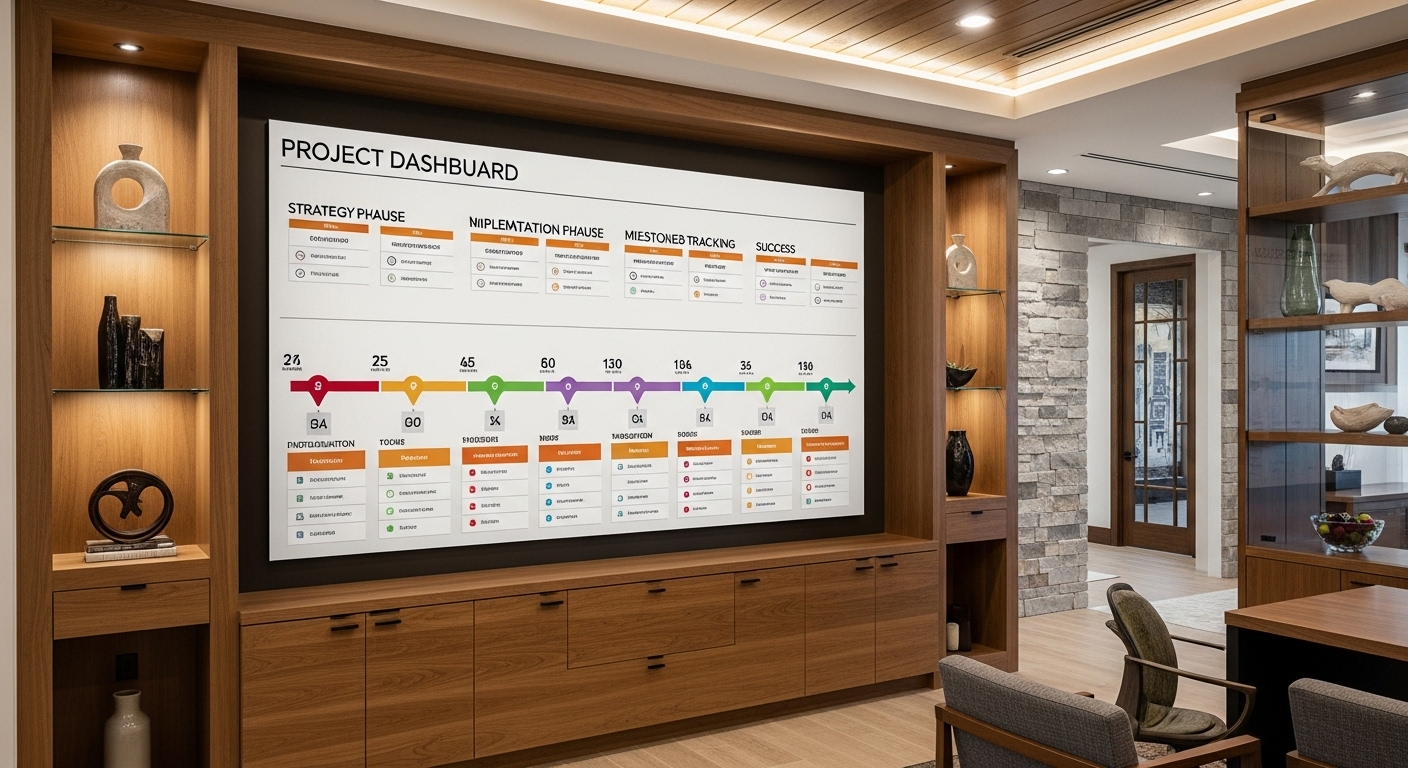
Measuring Success and Market Impact
Effective positioning requires consistent measurement and optimization. Key performance indicators must reflect both immediate market response and long-term brand development progress.
Essential success metrics:
Average sale price increase - Track pricing improvements over time
Lead quality enhancement - Monitor prospect qualification and conversion rates
Market share growth - Measure competitive position in target segments
Brand recognition development - Assess market awareness and perception changes
Client satisfaction scores - Maintain service quality during growth phases
Profitability improvement - Ensure positioning translates to business success
Your Competitive Advantage Awaits
The luxury home building market continues expanding, with high-net-worth individuals increasingly investing in custom homes. While established players dominate through heritage and scale, strategic positioning creates opportunities for mid-market builders to capture significant market share.
Success requires more than quality construction—it demands strategic brand positioning, targeted marketing, and consistent execution across every client touchpoint. The builders who implement comprehensive positioning strategies now will establish market presence before competition intensifies further.
Ready to position your building company for luxury market success? Our strategic positioning framework has helped builders increase average sale prices by 40-60% within 18 months. Contact 100XBuilds today to develop your competitive positioning strategy and capture your share of the luxury market. Your premium positioning starts with a single strategic decision—make it today.
